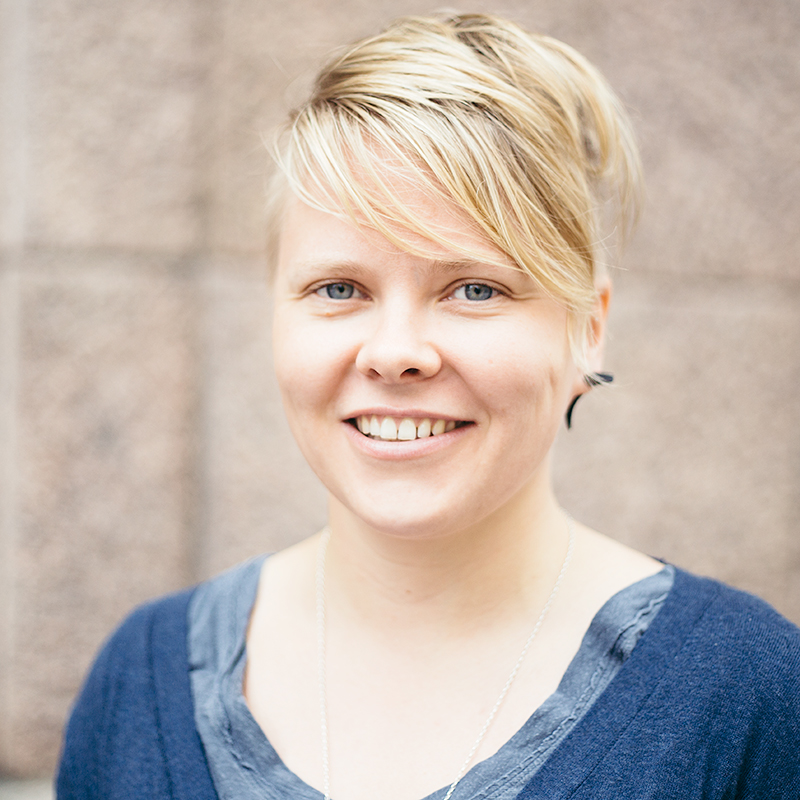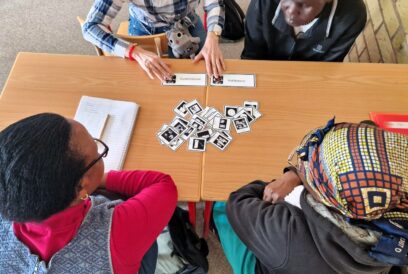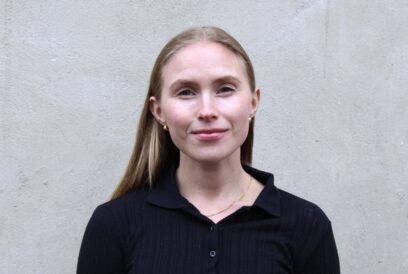

According to Ebba Ossiannilsson, people from the global south, women and academic juniors have become much stronger in their voices at online meetings and conferences. Illustration: Shutterstock
According to Ebba Ossiannilsson, people from the global south, women and academic juniors have become much stronger in their voices at online meetings and conferences. Illustration: Shutterstock
Two education experts share their visions on the democratic potential of the open online education and resources.
The only way to reach the goal of providing education for all is to go for open education, argues Professor Ebba Ossiannilsson. For over 20 years she has been a researcher, advocate and ambassador of open and distance learning. To her, learning and education are human rights and providing them to everyone is about democracy and social justice.
For the twitch towards open education to happen, a comprehensive systemic change in the global education system needs to be made.
While digital transformation has changed the way we live, work, communicate, spend time and the way we learn, most businesses have changed their business models to fit the digital era, but education has not, argues Ossiannilsson.
“Education seems to be the only business that has resistance to all the new things happening.”
What prevents the change from happening is the existing culture of education. For some teachers, the position in the front of the classroom is a question of power, and stepping out of the comfort zone is not an option. It also takes a big step forward by the leadership to work towards changing the system from classrooms and campuses towards more open education.
“Globally we have had a very hierarchical system in the culture of the educational system. In this lifelong learning model, we’re not used to thinking that people come in and out during their lifetime.”
She hopes to see a big change towards lifelong learning-oriented thinking, where people can just pop into the education system, and education is offered openly according to peoples demands instead of the routines and traditions of institutions. This would demand the stronger immersion of society and education.
“Labour market demands skills such as communication, social skills, problem solving, innovation, entrepreneurship, leadership etc. These need to be emphasized but also recognized in the educational system.”
Online learning reducing inequality
Open online education stands for free online learning possibilities accessible to anyone with an internet connection and suitable IT.
UNESCO believes that this universal access to information through high-quality education contributes to peace, sustainable social and economic development, and intercultural dialogue.
“We live in a global world and society, and education is no longer just a national service ‒ it is a global service and product,” believes Dr Andreas Rambow, an educational adviser and consultant with a background in economics.
Besides teaching non-traditional students using appropriate synchronous and asynchronous online platform solutions, he has experience of the topic from the other side of the monitor as well. He earned a degree from an American college of education studying only online and with classmates from all over the world.
He sees open online education as the future of education and the way to help people help themselves.
“The desire to pursue education is reliance itself,” Rambow says. “If people want to have a better life, they need to have education and the relentless pursuit of education can be provided by open resources.”
There isn’t anything in an expensive textbook that is not somewhere for free.
Ebba Ossiannilsson repeatedly refers to the sustainable development goals (SDG) of Agenda 2030, from which, according to her, providing quality education is the one that will aid in achieving the other goals.
She sees the current education models as very exclusive while, according to the SDGs, inclusiveness should be more stressed.
“There are needs to see more global collaboration to reach the UNESCO SDGs, not at least on equity, equality, access, quality, inclusiveness, democracy and lifelong learning.”
According to research and Ossiannilsson’ s own experience, online meetings and education are reducing the inequality. People from the global south, women and academic juniors have become much stronger in their voices at online meetings and conferences. Online, everyone has a more democratic voice, which is not always the case in the classrooms.
OER is information freely available
Open educational resources (OER) are teaching, learning and research materials in any medium – digital or otherwise – that reside in the public domain or have been released under an open licence that permits no-cost access, use, adaptation and redistribution by others with no or limited restrictions.
The expansion of OER plays a big role in the transfer to greater potential of open online education. In 2019 UNESCO published a recommendation on OER, which supports the creation, use and adaptation of inclusive and quality OER, and facilitates international cooperation in this field. This recommendation is the only and first one from UNESCO in education and learning.
“There isn’t anything in an expensive textbook that is not somewhere for free,” says Rambow who has worked at the University of Maryland, which has been promoting and using OER as course material for years.
He has noticed that, if the students do not have major publisher textbooks, they tend to question things more. They are more eager to go and find information and synthesise it.
“In a nutshell, this puts the student at the centre and in charge of their own learning.”
Educators are facing a new role
Although Covid has speeded up the development, not all the educators are equipped for making a total change in the methods and philosophy of their teaching. Switching to online learning can be heavy for both students and educators. Even for the technologically oriented educators, interaction online is a different world.
“A lot of educators struggle going online. They might be great classroom teachers but going online they feel lost and end up reading from the slides,” Rambow says.
Ossiannilsson agrees that, in addition to some good steps, panic solutions have been made during the sudden compulsory change of teaching methods, and she paints a harsh image of some of the efforts made in the long run towards online education.
“Educators try to take the new aspects of the digital transformation into the buildings they have, and fit them with the same patterns they have, traditional teaching, exams and so on. When Covid happened, they just threw all the material online,” Ossiannilsson says.
In her view, the change to online and open online learning is a broader concept of international collaboration and change of the education system, away from teacher, course, institution and degree-centred thinking to a more student-oriented one.
“Some educators might develop and use OER, but it’s only for my course, my university, but not for the people out there in the world. That’s the deep meaning of the UNESCO recommendation, to share resources with anyone in the world. And this includes lifelong learning as well.”
The campus education needs to provide something else than just content.
The system change should happen on all levels and more or less at the same time.
“Change is made by people, and not because you have a policy or a decision. We need a culture that empowers the change, and strong leadership that has an impact on the way we teach,” Ossiannilsson says.
Rambow agrees that the responsibility of the new forms and philosophy of teaching should not be solely on the shoulders of the teachers.
“In the short term, we can cater for individuals, but in the long run it should be the institutions,” says Rambow, who has years of experience in training educators in the transition to online teaching.
He gives an example from the University of Maryland, where teachers take a two-week course on online teaching before they start their courses there. If teachers do not have any experience of online teaching, they will also attend a peer mentoring programme after starting their courses.
Both open education experts see more positive sides in education online, but the lack of physical presence on campus is something that online education cannot overcome.
“We are social animals, so personal contact and interaction in the classroom cannot be replaced by online learning,” Rambow says. He argues that open online learning is viable but not a replacement for face-to-face teaching.
Ossiannilsson sees superior role of physical social presence as one reason why online education has to be developed to its wider potentials. “Also the campus education needs to provide something else than just content.”
Quality and costs in focus
Money and quality are often the issue when the discussion of OER is on the table. Who is the sponsor, and who pays for the open education and the material used? Can open resources be high-quality content?
Ossiannilsson, who specialises in the quality of open education, sees the questions as irrelevant.
“When there is campus, there are costs, but we don’t even question it. When it comes to open education, everyone is talking about the cost and quality.”
Instead, we should question whether it is really cost-efficient to run campuses, or for every university to have an introductory course in mathematics instead of sharing it and working together, thinks Ossiannilsson.
“Every teacher, every university or education centre working in silos is not cost-efficient, sustainable or resilient.”
When there is campus, there are costs, but we don’t even question it.
On the parameters of high-quality open education, Ossiannilsson mentions transparency, flexibility, accessibility, presence and interaction of peers and teachers, and assessment that is not just numbers. She sees quality as a much broader area than the resources.
Accuracy, accessibility, relevance and production quality are some of the factors Andreas Rambow considers when evaluating the quality of OER.
Neither of them sees any quality problems in producing, using or evaluating OER. There is self-control, control by institutions that publish the material, and the natural death of worthless education material. On the contrary, successful material will get used, spread around, translated and recontextualised. More so than a teacher’s material would if used only in the closed classroom of a limited course.
Again, are we as concerned with monitoring quality issues when it comes to traditional classroom education?
“We don’t ask what happens when the teachers close the classroom door. Some students are there physically, but never ask questions,” says Ossiannilsson, raising the question of whether physical presence alone adds to quality.
Dream scenarios of change
The future of education is estimated to be more open, more online and more scattered into micro credentials instead of full degrees. Fluidity will be the key to allowing learners to move easily from one educational setting to another without impediments, according to their own interests and needs of the moment.
There is also a general agreement that adult learning by 2030 will be able to take advantage of an abundance of learning materials including OER. These will be produced in multiple and collaborative ways and they will enable strong personal learning processes.
According to UNESCO, on top of improving the quality of learning, OER will improve policy dialogue, knowledge-sharing and capacity-building globally.
Ebba Ossiannilsson’s dream scenario for adult education is that the culture of education and leadership will change from the content-centred model to emphasising personal, seamless, innovation and learning how to learn.
“Education could take a totally different approach. It could help each of us on the planet to become what we could or want to become. These days, universities are offering courses and material year after year. I want to see education becoming more people-oriented.”
“Secondly, we really need to make the most of international collaboration. Not to provide the same courses everywhere at the same time every semester in all the places. It’s a waste of time and money.”
Instead of online learning, we are moving to learning where we are mobile in time and space, Andreas Rambow predicts.
“Open learning will be done with a mobile phone or pad in a car, a train, a cafeteria, waiting for a bus,… Education wherever you want it, whenever you want it ‒ that’s my prediction. How soon this will come, I don’t know.”
Open online learning terms exlained by Ebba Ossiannilsson
Open online learning (OEL)
Free and accessible online learning possibilities
Open online flexible distance learning (OFDL)
Free and accessible online learning possibilities, often in flexible and / or distance mode
Online distance education
Distance learning, also called distance education, e-learning, and online learning, form of education in which the main elements include physical separation of teachers and students during instruction and the use of various technologies to facilitate student-teacher and student-student communication.
ODL
Open and Distance Learning (ODL) system is a system wherein teachers and learners need not necessarily be present either at same place or same time and is flexible in regard to modalities and timing of teaching and learning as also the admission criteria without compromising necessary quality considerations
E-learning
A learning system based on formalised teaching but with the help of electronic resources is known as E-learning. While teaching can be based in or out of the classrooms, the use of computers and the Internet forms the major component of E-learning.
Blended learning
The practice of using both online and in-person learning experiences when teaching students. It is also called hybrid learning and mixed-mode learning. blended-learning experiences may vary widely in design and execution.
Blended learning involves leveraging the Internet to afford each student a more personalized learning experience, including increased student control over the time, place, path, and/or pace of learning.
Hybrid learning
Hybrid learning, also referred to as blended learning, is an approach to education that combines online educational materials with traditional in-person classroom methods. It’s not fully virtual nor is it fully digital. It requires the physical presence of both teacher and learner while providing the learner some control over time and pace.
Synchronous /asynchronous learning
Synchronous learning is learning that happens at the same time for the instructor and the learners, meaning that there’s real-time interaction between them. It can happen on- or offline.
Asynchronous learning is learning that doesn’t necessarily happen at the same time for the instructor and the learners. There’s no real-time interaction; the content is created and made available for consumption later on.
Mobile learning
Mobile learning (m-learning) is education (learning) via the Internet or network using personal mobile devices, such as tablets and smartphones to obtain learning materials through mobile apps, social interactions and online educational hubs.
Microlearning
Microlearning deals with relatively small learning units and short-term learning activities. The term is used in e-learning and related fields in the sense of learning processes in mediated environments. Microlearning is a holistic approach for skill based learning and education which deals with relatively small learning units.
Micro-credentials
Microlearning deals with relatively small learning units and short-term learning activities. The term is used in e-learning and related fields in the sense of learning processes in mediated environments.
MOOC
Massive Open Online Courses (MOOCs) are free online courses available for anyone to enroll. MOOCs provide an affordable and flexible way to learn new skills, advance your career and deliver quality educational experiences at scale.
Open Educational Resources (OER)
Open Educational Resources (OER) are teaching, learning and research materials in any medium – digital or otherwise – that reside in the public domain or have been released under an open license that permits no-cost access, use, adaptation and redistribution by others with no or limited restrictions.
Seamless learning
A seamless learning environment bridges private and public learning spaces where learning happens through both individual and collective efforts and across different contexts (such as in-school vs after-school, formal vs informal, physical world vs. virtual reality or cyberspace).
Flexible learning
Flexible learning is a principle of practice in formal education, concerned with increasing flexibility in the requirements, time and location of study, teaching, assessment and certification.
Author







